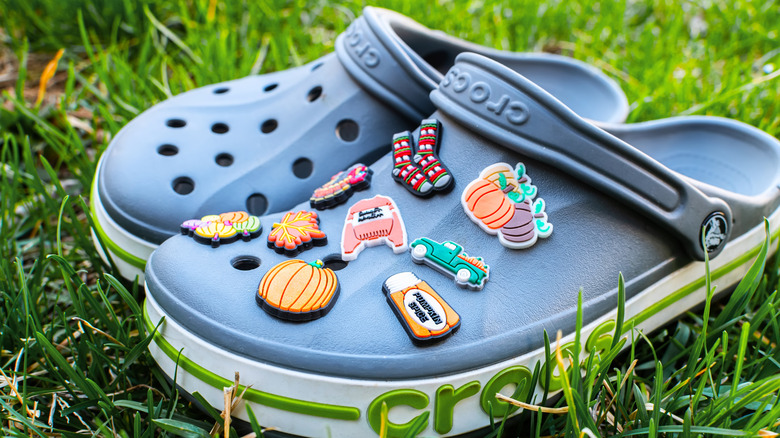The Best Way To Hand Wash Crocs For Cleaner Shoes That Last Longer
Whether you're rocking the classic Crocs while you're out and about, or you prefer their professional brand for careers where things can get slippery (hello, hospitality and nursing), there may come a time where your Crocs need to be washed. In fact, if you want to cut down on sweat, odors, and grime, washing regularly can help maintain the appearance of your go-to pair of shoes. However, Crocs can shrink if they're exposed to too much heat, so it's important to learn the right way to wash your Crocs for shoes that are clean but also still fit. While in some cases you can toss your Crocs in the washing machine, not all Crocs are made the same, and many benefit from a good, old fashioned hand-washing instead of a cold rinse-spin cycle.
There are some differences in how you may want to approach washing your Crocs depending on the type you own. Before diving into how to hand-wash different types of Crocs, though, you may want to learn what supplies you need on hand. According to Crocs, most of their designs are safe to be cleaned with a damp rag and mild cleaner. However, some, like their suede and wool options, need a no-water approach with a soft, dry brush. If you're ever in doubt about how to hand-wash your specific shoe, check with the Crocs official guidelines first.
How to hand wash Crocs based on material
When it comes to hand-washing, most Crocs can at least be spot cleaned with a damp rag, while others may require methods to buff away stains. Regardless of material, however, it's important to always air-dry your Crocs — no sunlight, heaters, or dryers, as these could cause shrinking or warping. Finding the best way to store shoes can also help them stay clean longer.
You may be most familiar with the classic Croc shoes: those clogs and other designs that are made with Croslite foam. Classic Crocs, as well as their fleece-lined shoes, can be hand-washed with cold water and soap. Start by rinsing them in the sink with cold water to remove any dirt and debris. Then, for stubborn grime, use a damp cloth or sponge and mild soap for extra scrubbing power. Keep in mind that, especially with fleece-lined shoes, full submersion can lead to longer drying times.
With leather Crocs, you want to avoid using too much water which could damage the shoe. Instead, use a damp rag and gentle cleaner specific for leather to clean dirty areas. If desired, you can finish with a leather shoe polish to get the most out of your hand-washing. For suede shoes, avoid cleaning with water. Opt for dry brushing to clean any spots and finish off with a waterproofing spray. This will help you achieve cleaner shoes without damaging their longevity.

